NAVYPEDIA
 Support the project with paypal
Support the project with paypal
Photo

Scarborough 1957
Ships
| Name | No | Yard No | Builder | Laid down | Launched | Comp | Fate |
|---|---|---|---|---|---|---|---|
| Blackpool | F77 | 1473 | Harland & Wolff, Belfast | 20.12.1954 | 14.2.1957 | 14.8.1958 | to New Zealand 6.1966-4/1971 (Blackpool), BU 5.1978 |
| Eastbourne | F73 | 143 | Vickers-Armstrong, Tyne | 13.1.1954 | 29.12.1955 | 9.1.1958 | BU 3.1985 |
| Scarborough | F63 | 142 | Vickers-Armstrong, Tyne | 11.9.1953 | 4.4.1955 | 10.5.1957 | BU 8.1977 |
| Tenby | F65 | 1233 | Cammell Laird, Birkenhead | 23.6.1953 | 4.10.1955 | 18.12.1957 | BU 9.1977 |
| Torquay | F43 | 1472 | Harland & Wolff, Belfast | 11.3.1953 | 1.7.1954 | 10.5.1956 | BU 7.1987 |
| Whitby | F36 | 1229 | Cammell Laird, Birkenhead | 30.9.1952 | 2.7.1954 | 10.7.1956 | BU 10.1978 |
Technical data
| Displacement standard, t | 2150 |
|---|---|
| Displacement full, t | 2560 |
| Length, m | 109.7 pp 112.7 oa |
| Breadth, m | 12.5 |
| Draught, m | 3.90 max |
| No of shafts | 2 |
| Machinery | 2 sets Yarrow geared steam turbines, 2 Babcock & Wilcox boilers |
| Power, h. p. | 30000 |
| Max speed, kts | 29 |
| Fuel, t | oil 370 |
| Endurance, nm(kts) | 4500(12) |
| Armament | F36, 43, 63, 65: 1 x 2 - 120/45 Mk 6, 1 x 2 - 40/60 STAAG Mk 2, 2 x 2 - 533 TT, 8 - 533 TT, 2 x 3 - 305 Limbo ASWRL F73, 77: 1 x 2 - 120/45 Mk 6, 1 x 2 - 40/60 STAAG Mk 2, 2 x 3 - 305 Limbo ASWRL |
| Electronic equipment | Whitby: type 275, type 293Q, type 277Q, type 974 or type 978 radars, type 166, type 170, type 164 sonars, UA-3 ECM suite others: type 275, type 293Q, type 277Q, type 974 or type 978 radars, type 166, type 170, type 174 sonars, UA-3 ECM suite |
| Complement | 152 - 231 |
Standard scale images

Whitby 1963

Torquay 1957

Torquay 1979

Torquay 1981
Graphics
Project history
The so-called 1945 Sloop studies had envisaged a 25kt ASW version of the standard hull, but the need for a Type 11 frigate very quickly disappeared with the postwar appearance of the last submarine. If such a design existed it had a short life, for the Staff Requirements raised the sea speed to 27kts, capable of being maintained in a seaway. Out of this emerged the Type 12 design, and the AA and AD, the downgraded, diesel-engined versions of the standard design.
The Type 12 hull-form was, and remains, one of the outstanding small warship designs of the century. A sharp 'V' form forward permitted the hull to be driven into a head sea without the 'panting' and 'slamming' which went with traditional destroyers, but amidships the hull widened to a deep square form. This acted against high smooth-water speed, but made for good sustained speed, ideal for pursuit of a submarine in rough weather. To reinforce this the big 3.6m diameter propellers were slow-running, making them quieter and more efficient, and a raised topgallant forecastle kept spray and green water off the bridge.
The armament was intended to be the twin 76mm/70 Mk 6 AA gun, a 40mm STAAG, two ASW Mk 10 triple mortars and no fewer than twelve TT for launching homing torpedoes, eight fixed and two twin training tubes. The Whitbys were prototypes and so went to sea with the existing, somewhat cumbersome 114mm, although production vessels were scheduled to get 76mm gun. The 533mm Mk 20 (E) torpedo (formerly 'Bidder') never became operational.
Because of the fine lines the armament and bridgework had to be far aft (this made for greater crew efficiency, but it did mean a crowded upper deck). In the first three ships (Whitby, Torquay and Scarborough) the funnel was a thin 'stovepipe' close to the lattice foremast (to resist atomic blast), and as the radar arrays suffered from smoke-corrosion (and to improve the ship's appearance) Eastbourne was given a thicker, raked funnel with a special domed cap. It was liked, and was subsequently retro-fitted to all three.
Modernizations
early 1960s, Whitby, Torquay, Scarborough, Tenby: - 2 x 2 - 533 TT, 8 - 533 TT
early 1960s, all: - 1 x 2 - 40/60, type 293Q, type 277Q radars; + 1 x 1 - 40/60 Mk 9, type 993 radar
late 1960s, Torquay, Scarborough, Tenby, Eastbourne: were altered for service as training frigates; - 1 x 1 - 40/60, 1 x 3 - 305 Limbo Mk 3 ASWRL, type 903 radar
1970s, all: - type 974 or type 978 radar; + type 1006 radar
1972, Torquay: + CAAIS CCS
Naval service
Scarborough and Tenby were temporarily transferred to Pakistan, but when the refit cost rose to £ 10m each the deal was cancelled. Blackpool was on loan to New Zealand from 1966 to 1971. Torquay was used for navigation and direction training, and carried out trials of the first Computer Assisted Action Information System (CAAIS).
 HOME
HOME FIGHTING SHIPS OF THE WORLD
FIGHTING SHIPS OF THE WORLD UNITED KINGDOM
UNITED KINGDOM ESCORTS
ESCORTS WHITBY frigates (6, 1956 - 1958)
WHITBY frigates (6, 1956 - 1958)

